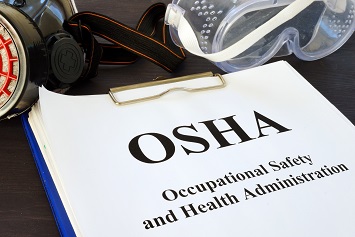You may have wondered why OSHA and OSHA-authorized states refer to occurrences in which workers are injured or killed as incidents, not accidents. The main reason is that, by the dictionary definition, an accident is an “unexpected or unforeseen” incident that usually results in injury or damage. To take an extreme example, an airplane that loses power and crashes into the roof of a factory is, from the perspective of the factory, an accident because neither the factory owner nor the employees in the factory could have foreseen this happening. But OSHA’s position is that most worker injuries are not unforeseen even if they are not exactly expected.
“Most workplace injuries and illnesses don’t just happen—they are usually predictable and preventable,” states OSHA in one of its Safe + Sound publications.
Learning from History
One of the most effective ways to understand which types of incidents causing worker injury may occur in the workplace is to have a clear and comprehensive knowledge of which types of incidents have occurred in the past. In this way, the circumstances that created the hazard and injury/death/illness in the past can be corrected before another similar incident occurs.
“It’s a shift toward prevention—finding and fixing hazards before they lead to injury or illness,” states OSHA. “It’s like choosing between putting out fires after they damage people and property and making sure fires never start in the first place.”
Using 300 Logs for Hazard Identification
All this is OSHA’s way of promoting use of the OSHA 300 log. The 300 log is a form all employers with 10 or more employees on payroll (including hourly, salaried, executive, part-time, seasonal, or migrant workers), with limited exceptions for low-hazard industries, must use to record certain injuries and illnesses that occur in the workplace. Information entered into the 300 log should indicate the types of injuries or illnesses that have occurred; where and when they occurred; their frequency; the specific processes, activities, tasks, or equipment/material involved; the name and job title of the employee injured or made sick; and the number of days the employee was away from work or on restricted or light duty, if any. Employers must save the 300 log for 5 years and update it to include any newly discovered recordable injuries or illnesses.
“The log is not just a way to look at your past safety and health record, and it’s not just something for OSHA,” says OSHA. “It’s a powerful tool to help you identify hazards in your workplace so you can correct them and prevent future injuries and illnesses.” OSHA gives the following examples:
- Slip-and-fall injuries might tell you that there are housekeeping-related hazards to correct or procedures to adjust.
- A back injury might show you that there is a need for lifting equipment or better training in safe lifting techniques.
- A needlestick injury might indicate that you need to improve your needlestick prevention program and/or implement safer needle devices.
- A fall-related injury might indicate the need for improvements in fall protection or training.
Next Steps
OSHA points out that using the 300 log to identify injury and illness trends is a good first step in identifying hazards and demonstrating management commitment to safety and health. Eventually, employers can build on this step and add other means of identifying hazards, such as self-inspections, job hazard analyses, and maintenance work order trends.
Also, hazard identification and incident prevention will rarely be successful if it is not collaborative.
“Involving workers in reviewing the log and making recommendations for correcting hazards will make this step much more effective,” says OSHA. “In fact, management leadership and worker participation—along with a systematic approach to finding and fixing hazards—are key components of all successful safety and health programs.”

